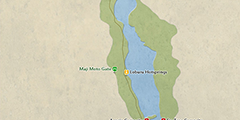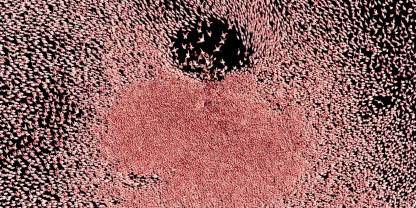For years, Lake Bogoria National Reserve was the best place in Kenya to see . But fluctuating water levels, combined with unchecked entry into the park by herders and their cattle, means that flamingo numbers can’t be guaranteed. Before making the long journey here, check to see if the flamingos are present. If they are, you’re in for a special experience.

-
Best Time To Go
- June to February (Little rain)
-
High Season
- Never (Bogoria never gets crowded)
-
Size
- 107km² / 41mi²
-
Altitude
-
985-1,823m /3,232-5,981ft
 View Photos
View Photos
 View Photos
+24
Photos
View Photos
+24
Photos
 Open Map
Open Map
Pros & Cons
- Pretty scenery in the Rift Valley
- Excellent birding, often with flocks of
- Very few visitors
- Mammal sightings are rare
- Only one road to explore the shore of the lake
- No accommodations inside the park apart from campsites
Wildlife
The reserve’s main appeal lies in the scenery and, when they’re here, the . The movement of the flamingos depends on water levels and algae concentrations. The reserve was also once a refuge for , but these stately animals are very rarely seen. , , and can occasionally be seen crossing the road.
More about Lake Bogoria’s wildlifeScenery
One thing that hasn’t deserted Lake Bogoria is its good looks: the scenery is breathtaking. The reserve’s access road runs along the lake at the base of the , and the views are especially good around the Loburu Hot Springs. The springs are a reminder of the tectonic activity in the area that shaped the Rift Valley. The road climbs up to viewpoints.
Activities
Going on a bird-dominated (bring your binoculars) is the only real activity inside Lake Bogoria National Reserve. There’s not much other wildlife to see. This could be a guided game drive on a safari organized by a tour operator, or a self-drive game drive.
Weather & Climate
Consistently warm temperatures are the norm at Lake Bogoria, thanks to its equatorial location. It does get colder higher up the escarpment, but this area is off-limits to visitors. The weather in the Dry season (September to February) is very agreeable, though rain can wash in at short notice. The Wet season (March to August) is characterized not so much by rainy days as rainy afternoons.
More about the weather and climateBest Time To Visit
can be seen at the lake throughout the year. But it’s probably best to see them in the Dry season (September to February), when you can avoid the overcast skies and rain interruptions of the wetter months. The only drawback is the dust that sometimes clouds the air at this time.
More about the best time to visit



